CBC
Sun, October 1, 2023
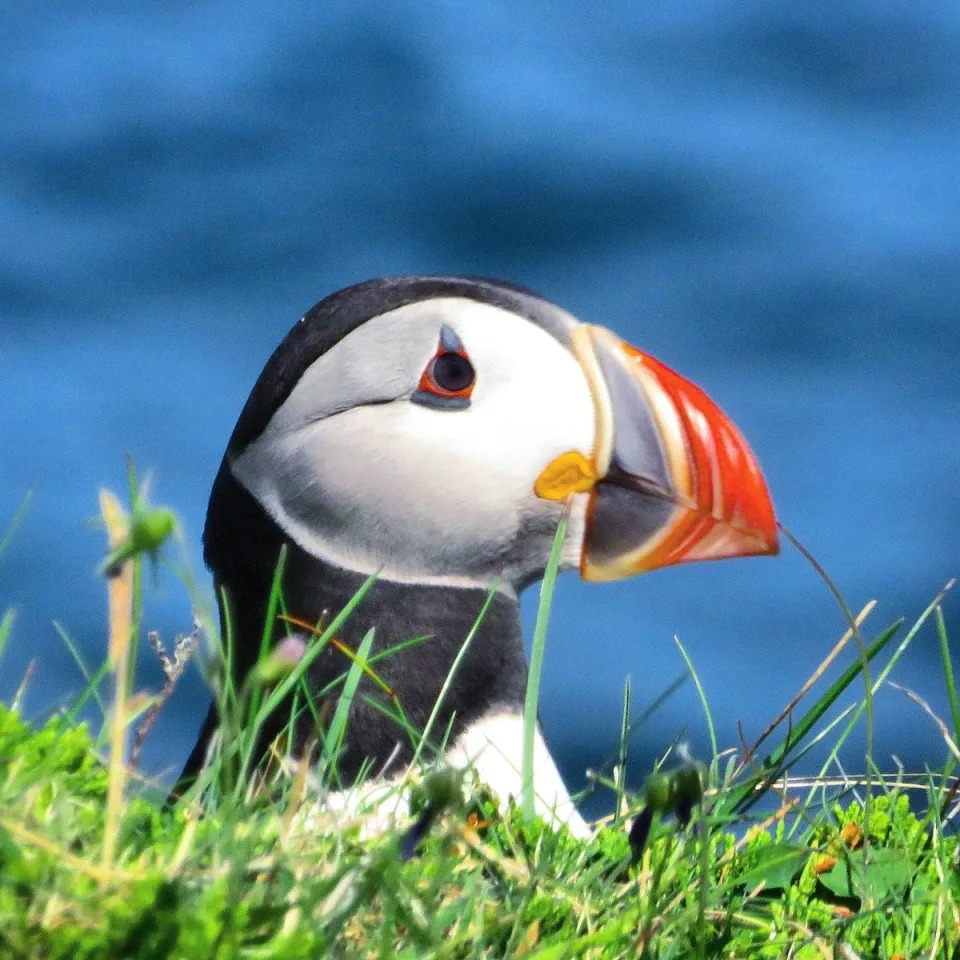
A puffin pokes its head out of its nest in Elliston. (Submitted by Mark Gray - image credit)
The volunteers who rescue Atlantic puffin chicks — called "pufflings" — knew something was wrong when so few strays from the Witless Bay Ecological Reserve on Newfoundland's Avalon Peninsula showed up this summer.
The fledglings emerge from their burrow at night to avoid predators, but some are attracted to the lights in the rapidly growing communities on shore. Members of a group called the Puffin Patrol capture the stranded pufflings and release them into the ocean.
"The Puffin Patrol wasn't finding very many birds," said Sabina Wilhelm, a wildlife biologist with Environment and Climate Change Canada.
"And the birds that were being found were actually very small in body weight."
Some were less than half the normal size for puffins their age.
After searching a sampling of nests on the ecological reserve where Atlantic puffins congregate to breed each spring, Wilhelm and her colleagues discovered that many chicks had perished.
The grim discovery connects the fate of the Atlantic puffin — which is not only the official bird of Newfoundland and Labrador, but a ubiquitous image in the province — with serious problems in ocean ecology, including warming ocean temperatures and a struggling, complex food web.
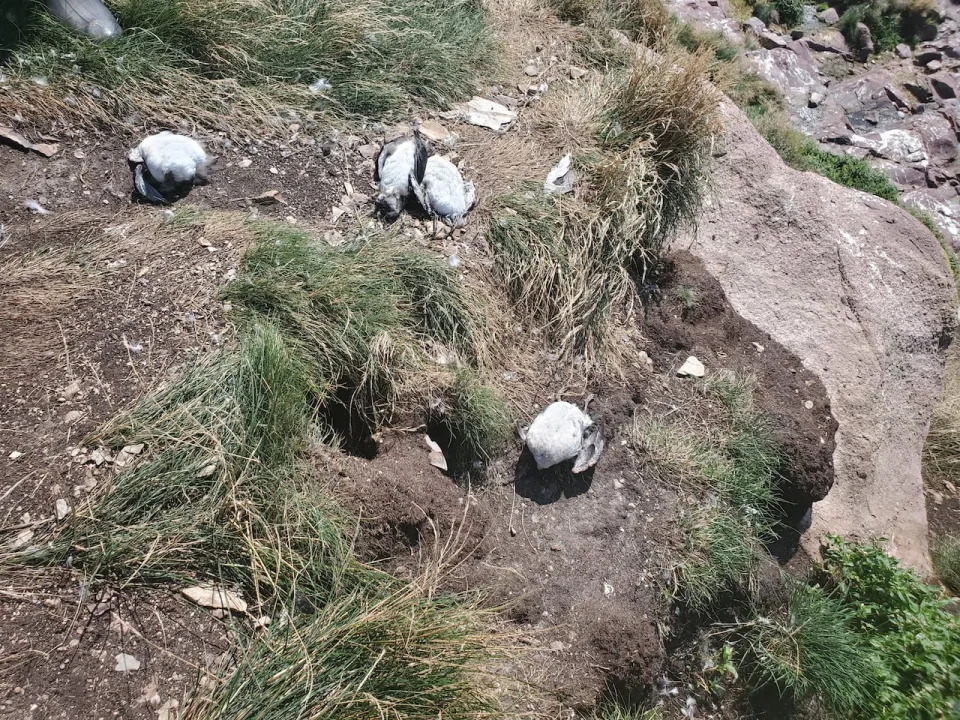
Sabina Wilhelm and her colleagues were alarmed that the Puffin Patrol wasn't seeing very many birds this year, so they went searching for them, finding many birds.
Sabina Wilhelm and her colleagues were alarmed that the Puffin Patrol wasn't seeing very many birds this year, so they went searching for them, finding many birds. (Submitted by Sabina Wilhelm)
'They died of starvation'
Tests ruled out avian flu, which caused a massive die-off of birds in 2022.
"Just based on the the body mass and just picking up the dead chicks, that were just skin and bones, so essentially they died of starvation."
Adult puffins dive for food such as capelin, a forage fish that can make up as much as 50 per cent of their diet, and bring it back to the nest, a burrow in the cliffs.
But when food is scarce the adults feed themselves, and the chick is left to starve.
Another anomaly is that puffins bred later this year, said Wilhelm.
"Normally they start fledging in early August and by the end of August, early September, most of them are gone," she said.
"There seems to have been this mismatch between breeding activity and the fact that capelin kind of disappeared.… Other years there might have still been a lot of capelin in August. That just didn't happen this year."
Warmer ocean temperatures also work against Atlantic puffins, who can dive to a depth of only 50 metres to catch capelin and other forage fish such as sandlance and herring.
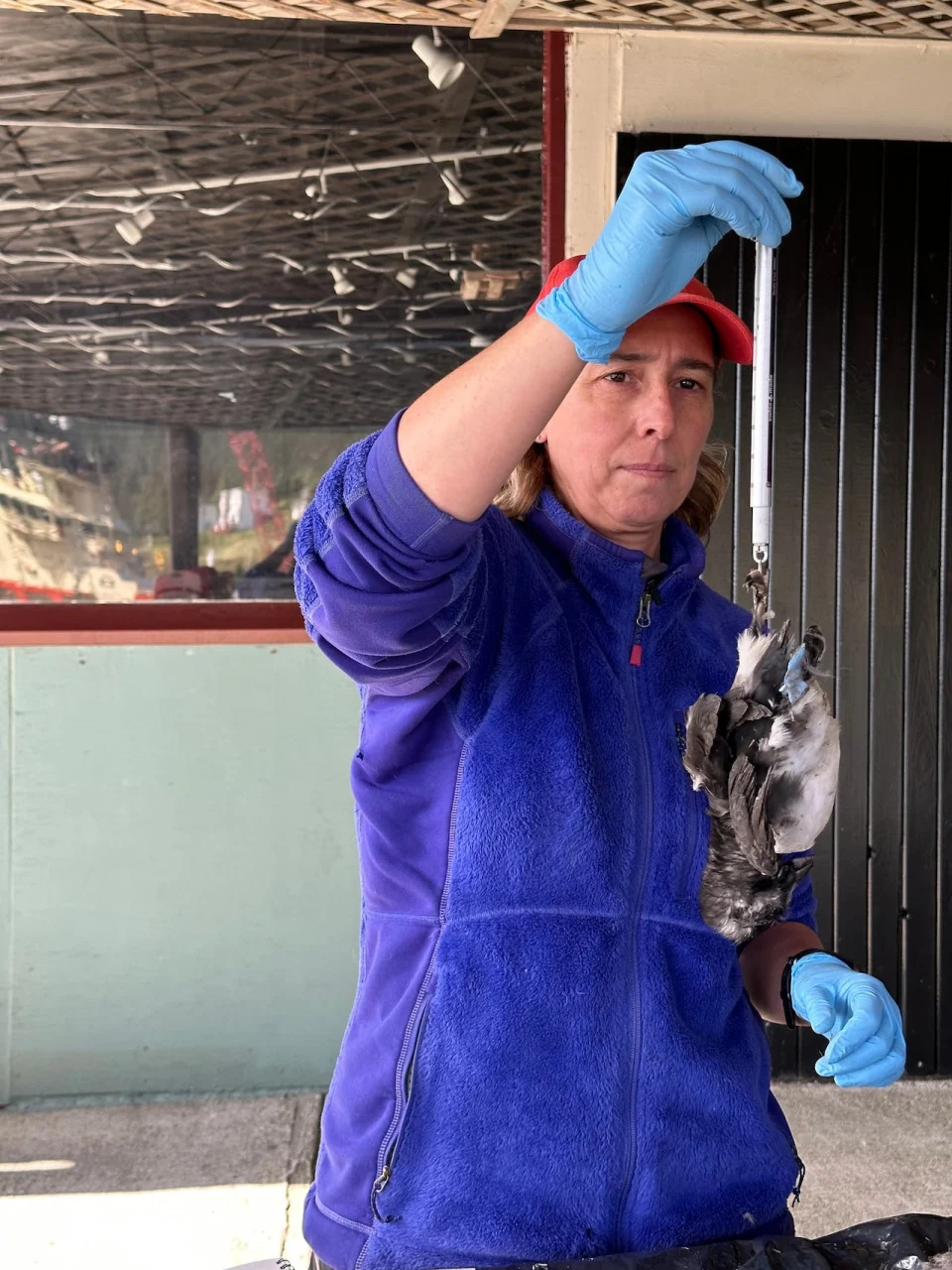
Wildlife biologist Sabina Wilhelm weighs and measures puffin chicks, or pufflings, who were found dead in their nests, having starved to death because capelin, their main food source, was not available this summer. Many of those gathered for testing were less than half their normal size.
Wildlife biologist Sabina Wilhelm weighs and measures puffin chicks, or pufflings, who were found dead in their nests, having starved to death because capelin, their main food source, was not available this summer. Many of those gathered for testing were less than half their normal size. (Chris O'Neill-Yates/CBC)
"So if the fish are moving downwards into the water column because the waters are warmer, then suddenly … they're not accessible to the puffins anymore because they can't dive that deep," said Wilhelm.
With more than 300,000 nesting pairs breeding at the Witless Bay Ecological Reserve, the Atlantic puffin population is robust overall, said Wilhelm.
Because they live well into their 20s, losing their offspring in one year does not spell disaster for the species. But the starvation of so many Atlantic chicks this year is a concern, said Wilhelm.
When tour boat operator Joe O'Brien noticed dead chicks floating on the water, he alerted Wilhelm and her colleagues.
O'Brien, a former fisherman, has been bringing tourists to the Witless Bay Ecological Reserve for 39 summers.
With so many species, from cod to seabirds to whales, relying on capelin for their survival, O'Brien says it's time for a new approach to managing this fishery.
"Should we be harvesting capelin at all?" asked O'Brien.
"Shouldn't that be a sign to to management that we should change our philosophy respecting the ocean?"
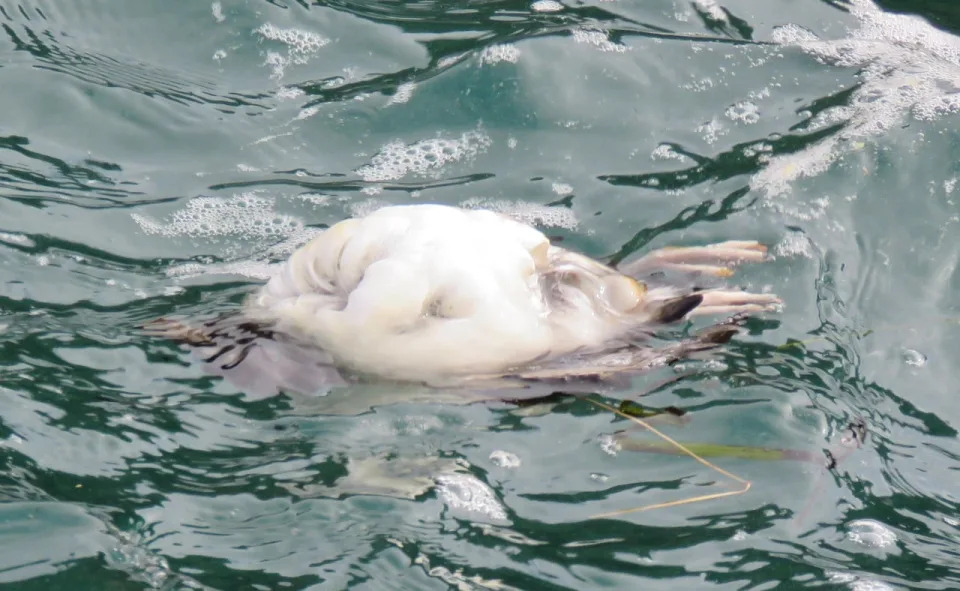
A dead Atlantic puffin chick floats in the water off Bird Island in the Witless Bay Ecological Reserve, Canada's largest Atlantic puffin colony. Some 300,000 nesting pairs return to the reserve every year to breed.
A dead Atlantic puffin chick floats in the water off Bird Island in the Witless Bay Ecological Reserve, Canada's largest Atlantic puffin colony. Some 300,000 nesting pairs return to the reserve every year to breed. (Chris O'Neill-Yates/CBC)
The Department of Fisheries and Oceans categorizes the capelin stock as "critical," yet it allowed a commercial fishery of 14,533 tonnes in 2023 for the second year in a row.
In its capelin management plan, DFO said, "Science shows the fishery's impact on capelin is small compared to predation by other species such as seabirds, cod and other fish."
Capelin are caught using a purse seine, which surrounds the fish, corralling them into the net and tightening it, similar to a drawstring, before it's hauled aboard a fishing vessel.
However, the species is a mere fraction of its abundance in the 1980s. As the principal food for cod, capelin overfishing is recognized as one of the key factors in the collapse of northern cod stocks more than three decades ago.
Valued for its eggs, or roe, female capelin is exported to China, the United States, Taiwan and Japan,
In the 2023 season, capelin sold for an average of 16 cents a pound, netting $4.5 million to fishermen in landed value, making it one of the least lucrative fisheries in the province.
"We're destroying them in mass volumes … only taking the females.… That's crazy," said O'Brien.
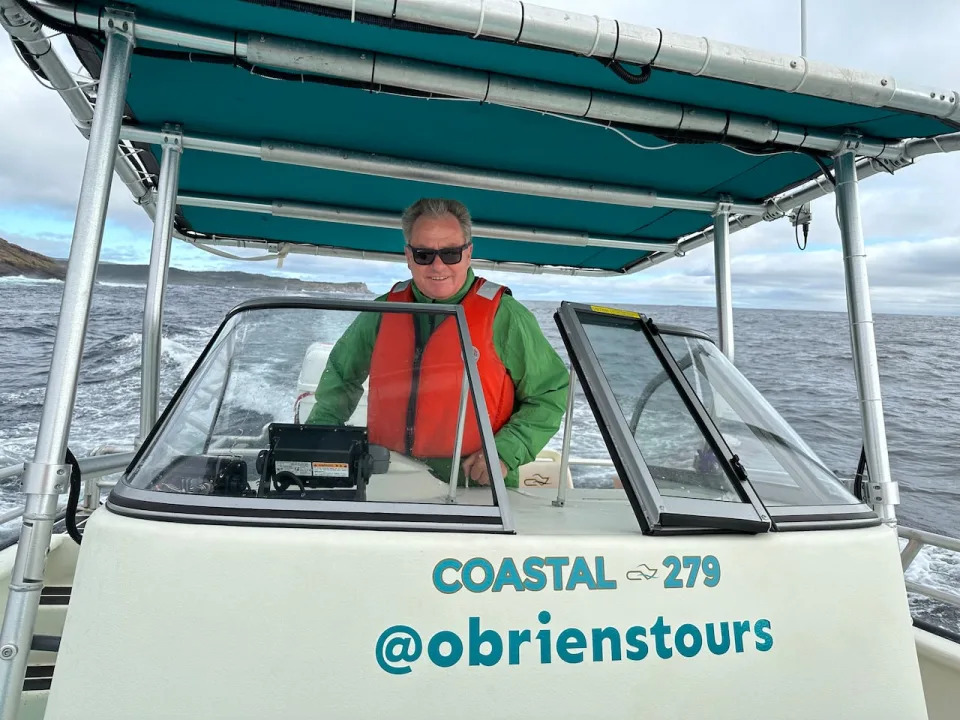
Tour boat operator Joe O'Brien noticed dead puffins floating on the water this summer near the Witless Bay Ecological Reserve, 30 kilometres south of St. John's.
Tour boat operator Joe O'Brien noticed dead puffins floating on the water this summer near the Witless Bay Ecological Reserve, 30 kilometres south of St. John's. (Chris O'Neill-Yates/CBC)
"Why are we catching one of the main sources of food for just about everything in the water?"
Capelin fishery 'incomprehensible'
Ian Jones, a marine bird biologist at Memorial University, is also concerned about the impact fishing capelin has on the entire ecosystem.
"When I hear these claims that somehow you can keep fishing a forage fish like this … it's incomprehensible to me," he said, adding that the fisheries "arguably don't bring in a whole lot of money."
The effects of fishing a forage species, a rapidly warming ocean due to climate change, increasing amounts of artificial light, seabird hunting and monofilament fishing nets are cumulatively stacked against seabirds' long-term survival, said Jones.
While Atlantic puffins can sustain some mortality because of their abundance, the Leach's storm petrel has seen a decline of about 50 per cent in recent years, said Jones.
"We haven't seen a bird disappearing at this rate since the passenger pigeon," said Jones.
Like the Atlantic puffin, the Leach's storm petrel is also affected by a growing amount of artificial light from communities, boats and offshore oil installations.
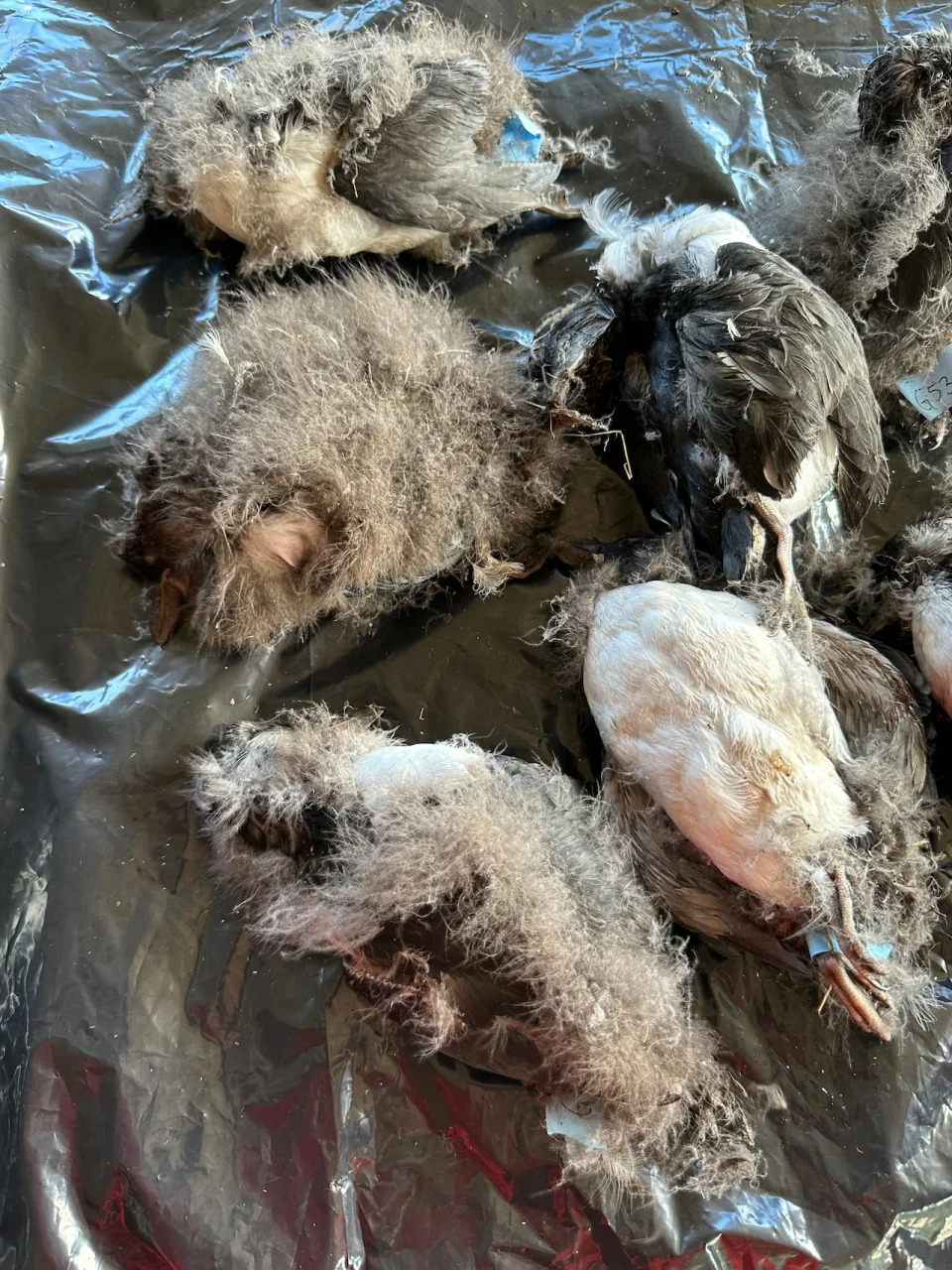
Wildlife biologists checked some burrows where Atlantic puffins nest and found a large number of pufflings dead in their nest from starvation. Adult puffins will feed themselves first, and the scarcity of capelin, a forage species of fish, meant there was not enough food to take back to the nest to feed their chicks. Capelin make up to 50 per cent of their diet.More
Wildlife biologists checked some burrows where Atlantic puffins nest and found a large number of pufflings dead in their nest from starvation. Adult puffins will feed themselves first, and the scarcity of capelin, a forage species of fish, meant there was not enough food to take back to the nest to feed their chicks. Capelin make up to 50 per cent of their diet. (Chris O'Neill-Yates/CBC)
"These seabirds that have evolved to survive in one of the harshest environments on Earth are faced with this completely disorientating artificial light," said Jones. "They don't successfully get out to sea so they basically strand on land and and die in very large numbers."
'Canary in the coalmine'
The United Nations calls light pollution "a significant and growing threat to wildlife" that contributes to the death of millions of birds globally.
Seabirds that migrate at night and go off course chasing artificial light are at risk of becoming exhausted, being eaten by predators, or colliding with buildings.
The impact of warming ocean temperatures is already being found in other Atlantic puffin populations.
"The worry is, is that these puffins are going to experience the same fate here in Newfoundland that they're experiencing in the Eastern Atlantic," said Jones, "with year after year of no chick surviving, the population begins to crash and then in some areas disappear."
Seabirds are a great indicator of the health of the ecosystem, says Wilhelm, and O'Brien says the puffin is warning us the ocean is under stress from climate change.
"The puffin is acting like the canary in the coal mine."
No comments:
Post a Comment